What is in my masala dabba? Masala dabba is the first thing you will notice in an Indian kitchen. It has all basic and most commonly used spices stored.
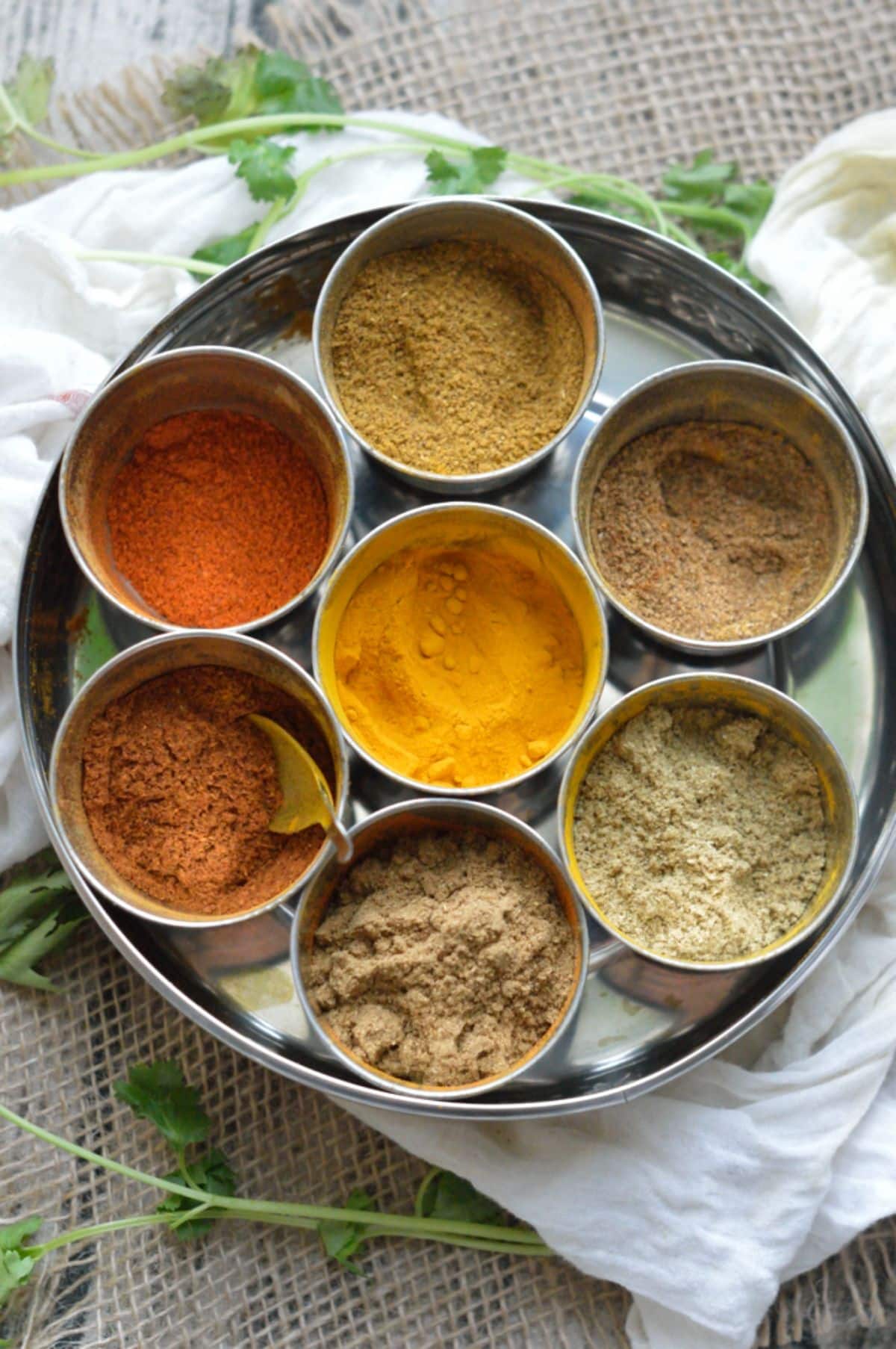
My masala dabba contains: turmeric, coriander, cumin, curry, and garam masala. In this post, we will go over the most common list of Indian spices and their significance in Indian cooking.
List of Indian spices
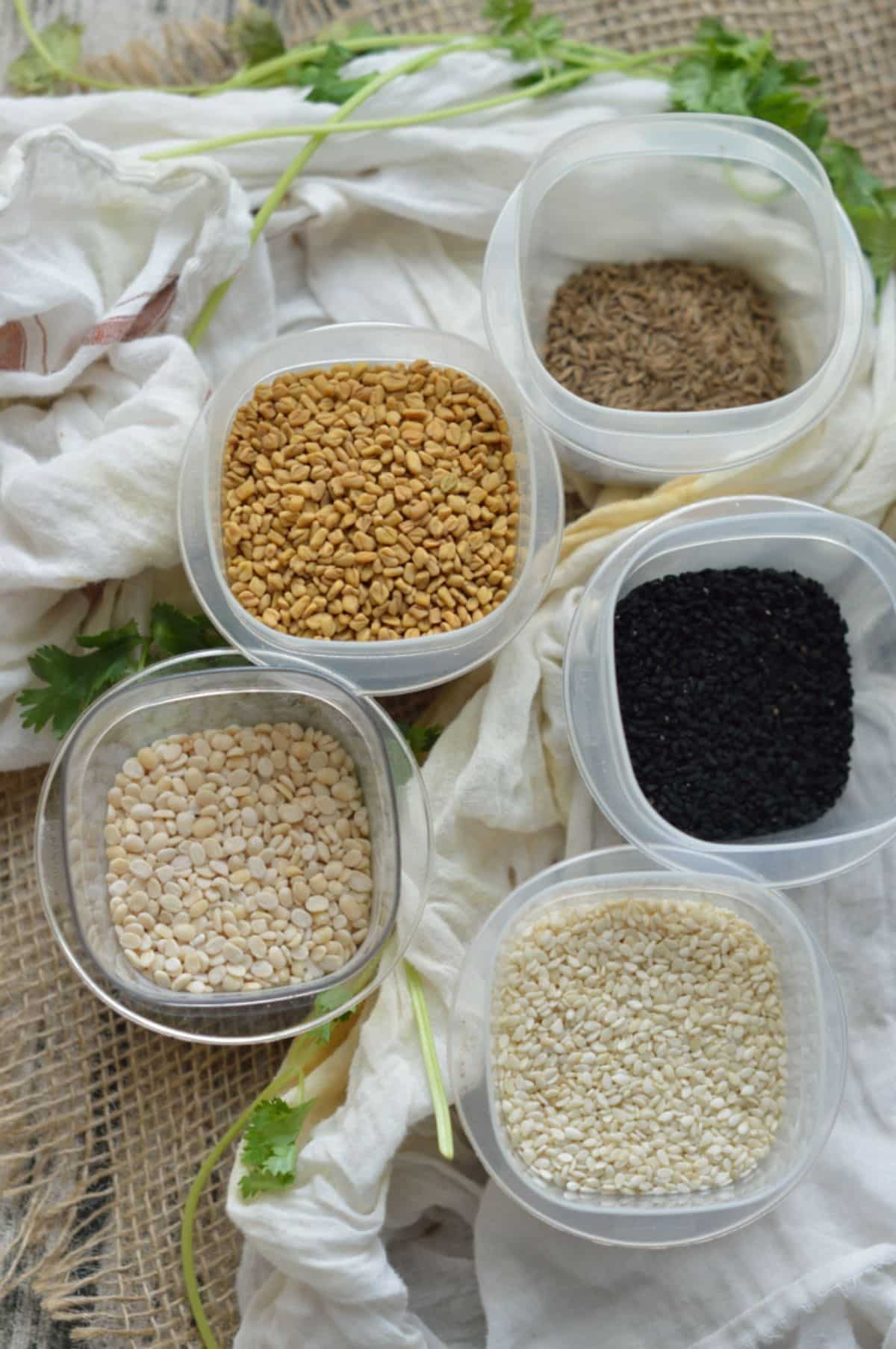
Indian cuisine is known for its diverse and aromatic blend of spices, which add depth and flavor to a wide range of dishes. Here are some of the most commonly used spices in Indian cooking:
- Cumin (Jeera) - A warm, earthy spice with a slightly bitter flavor. It is used in a variety of dishes, including curries, spice blends, and rice dishes.
- Coriander (Dhania) - A slightly sweet and citrusy spice that adds a bright, fresh flavor to dishes. It is often used in spice blends, curries, and chutneys.
- Turmeric (Haldi) - A bright yellow spice with a warm, bitter flavor. It is often used as a natural food coloring and has anti-inflammatory properties.
- Cardamom (Elaichi) - A sweet, fragrant spice with a slightly minty flavor. It is used in sweet dishes, such as desserts and chai tea, as well as in savory dishes, like biryanis and stews.
- Cinnamon (Dalchini) - A sweet, woody spice with a warm flavor. It is used in both sweet and savory dishes, such as spice blends, curries, and rice dishes.
- Cloves (Laung) - A sweet and slightly bitter spice with a strong, pungent flavor. It is often used in spice blends, as well as in sweet dishes like desserts and chai tea.
- Mustard Seeds (Rai) - A slightly bitter and pungent spice with a crunchy texture. It is used in a variety of dishes, including curries, spice blends, and pickles.
- Fennel Seeds (Saunf) - A sweet and slightly licorice-flavored spice that is often used in spice blends, desserts, and tea.
- Ginger (Adrak) - A slightly sweet and spicy root that adds a warm, earthy flavor to dishes. It is often used in curries, spice blends, and chutneys.
- Red Chili Powder (Lal Mirch) - A hot and spicy powder that is used to add heat to dishes. It is often used in curries, spice blends, and sauces.
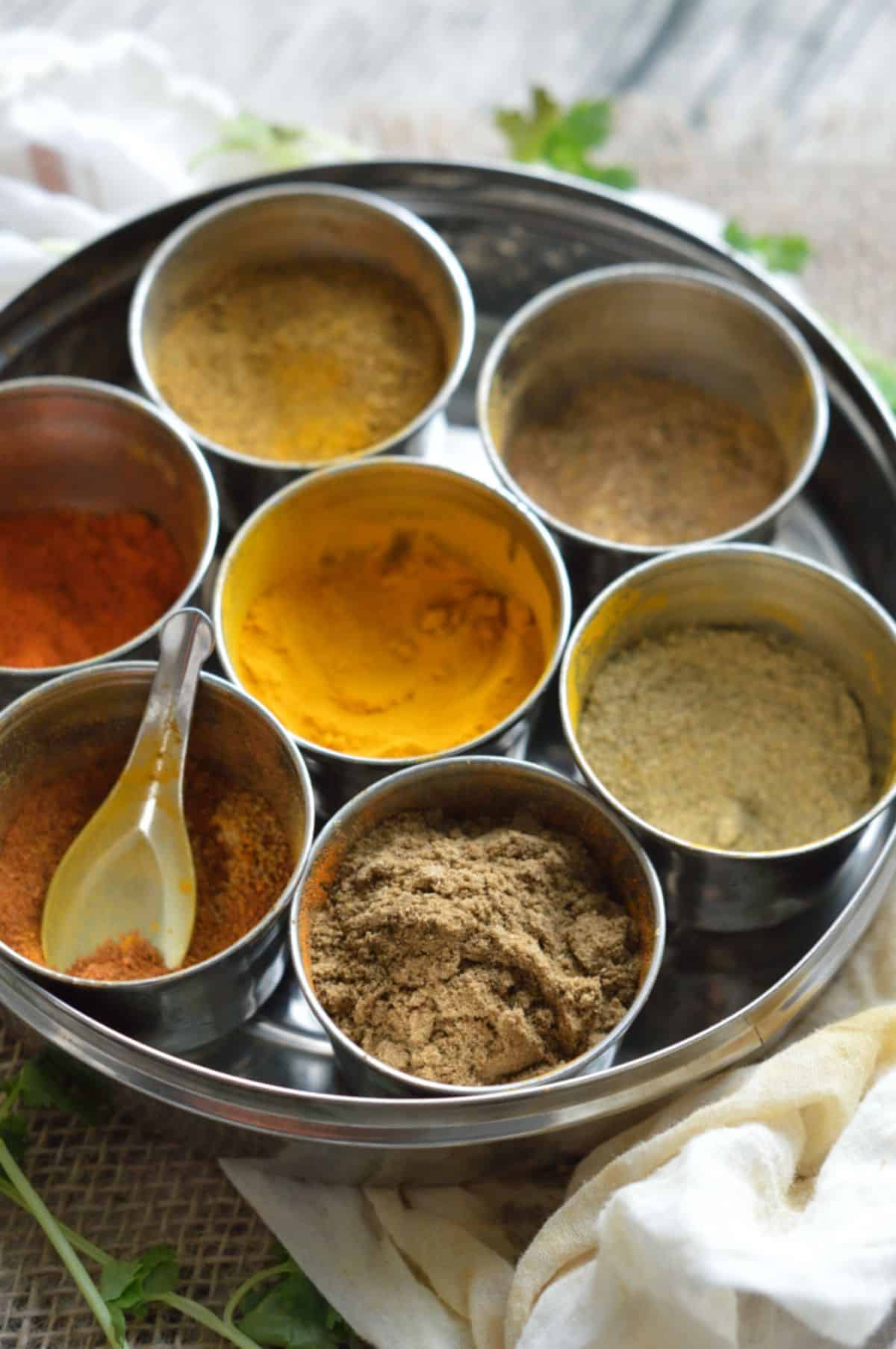
These are just a few of the many spices used in Indian cooking, and the combination and use of spices can vary greatly from region to region and from dish to dish.
Paanch Phoron is a Bengali spice blend made from five whole spices: cumin seeds, mustard seeds, fennel seeds, fenugreek seeds, and Nigella seeds. It is commonly used in Bengali cuisine to add a complex and aromatic flavor to dishes, such as lentil stews, pickles, and curries. The name "Paanch Phoron" literally means "five spices" in Bengali.
Each of the five spices in Paanch Phoron contributes a unique flavor and aroma to the blend. Cumin seeds add a warm and earthy flavor, while mustard seeds add a slightly bitter and pungent flavor. Fennel seeds add a sweet and slightly licorice-flavored aroma, while fenugreek seeds have a nutty and slightly bitter flavor. Nigella seeds have a slightly spicy and peppery flavor.
To use Paanch Phoron, the spice blend is typically dry-roasted in a pan until fragrant, and then added to hot oil to release its aroma. It is then added to the dish at the beginning of cooking, allowing the spices to flavor the dish as it cooks. Paanch Phoron is also used in a tempering process, where the spices are added to hot oil at the end of cooking, to add a final burst of flavor.
Paanch Phoron is a staple in Bengali households and is also used in other cuisines in India and beyond. It can be purchased pre-made at Indian grocery stores, or can be easily made at home by mixing equal parts of the five spices. Whether used as a base for dishes or as a final touch, Paanch Phoron adds a rich and complex flavor to a variety of dishes.
Cumin
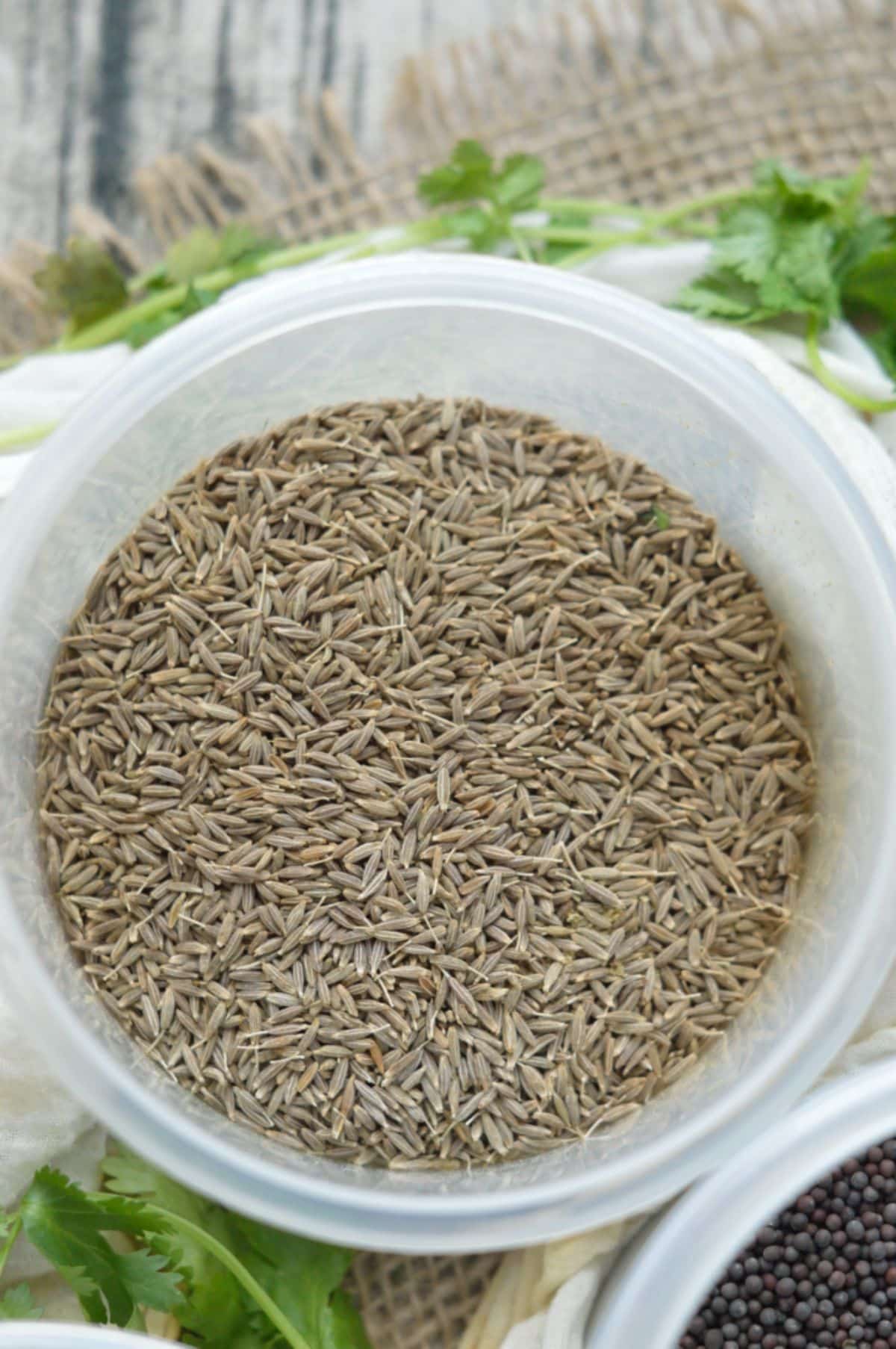
Cumin seeds are an essential ingredient in Indian cuisine, used in a variety of dishes ranging from curries to snacks. Here are some ways in which cumin seeds are used in Indian cooking:
- As a tempering spice: Cumin seeds are commonly used as a tempering spice in Indian cooking. This involves frying the cumin seeds in oil or ghee until they become fragrant and slightly browned and then adding them to the dish to infuse it with flavor. This technique is used in a variety of dishes, including dal, rice, and vegetable curries.
- In spice blends: Cumin seeds are a key ingredient in many Indian spice blends, including garam masala, which is used in a wide range of Indian dishes. The seeds are roasted and ground along with other spices to create a complex and flavorful blend.
- In marinades and rubs: Cumin seeds are often used in marinades and rubs for meat and fish dishes. They add a warm and earthy flavor to the dish and also help to tenderize the meat.
- In soups and stews: Cumin seeds are often used in soups and stews to add flavor and depth. They are typically added at the beginning of the cooking process, along with other spices, and allowed to simmer for a long time to release their full flavor.
- In snacks and street food: Cumin seeds are a common ingredient in Indian snacks and street food. They are often added to chaat, a popular street food that consists of a mixture of ingredients such as potatoes, chickpeas, and tamarind chutney. They are also used in samosas, a popular snack that consists of a fried pastry filled with spiced potatoes and vegetables.
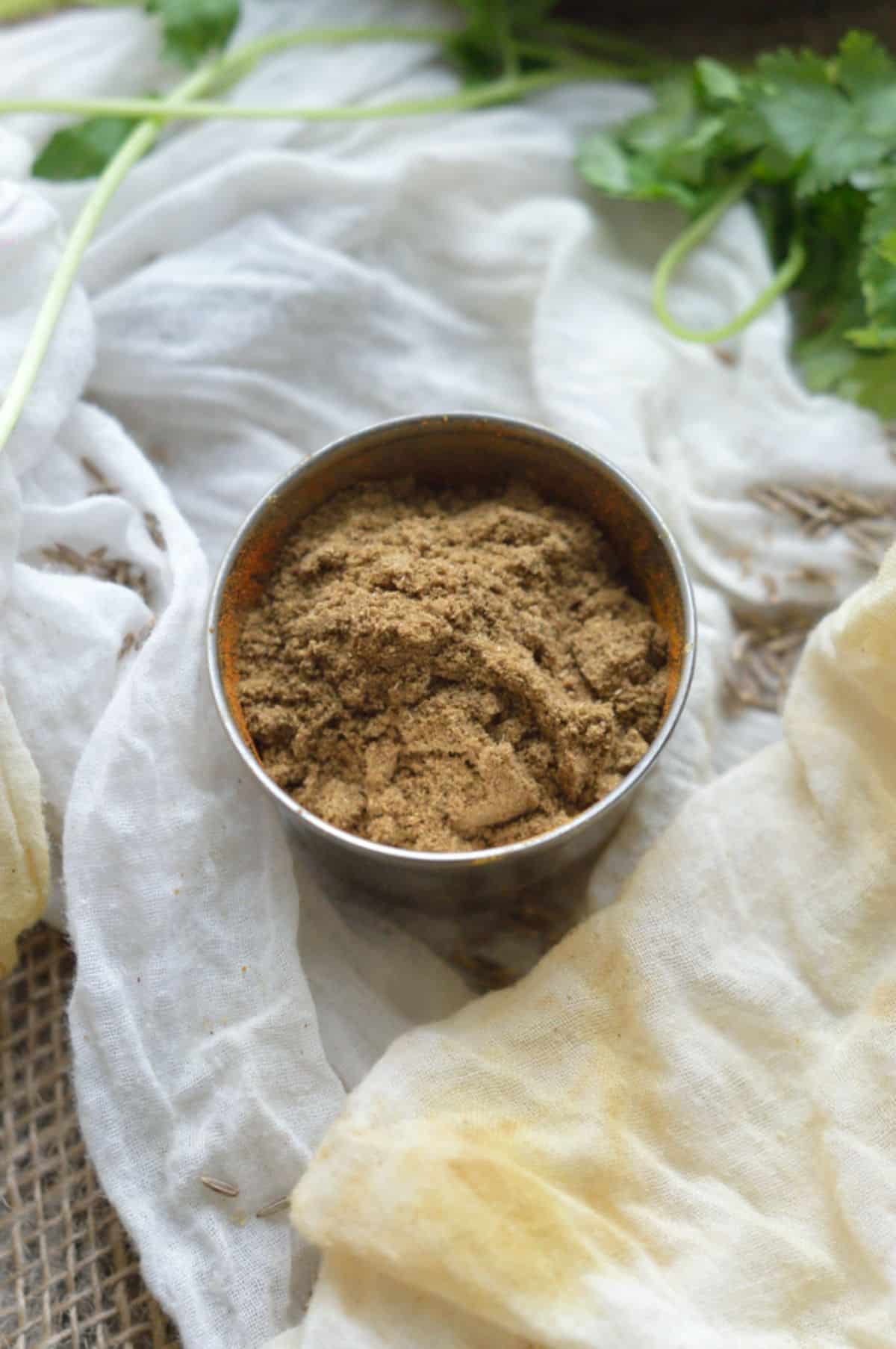
Overall, cumin seeds are a versatile and essential ingredient in Indian cooking. They add flavor and depth to a wide range of dishes and are used in a variety of ways, from tempering to spice blends to snacks and street food.
Turmeric
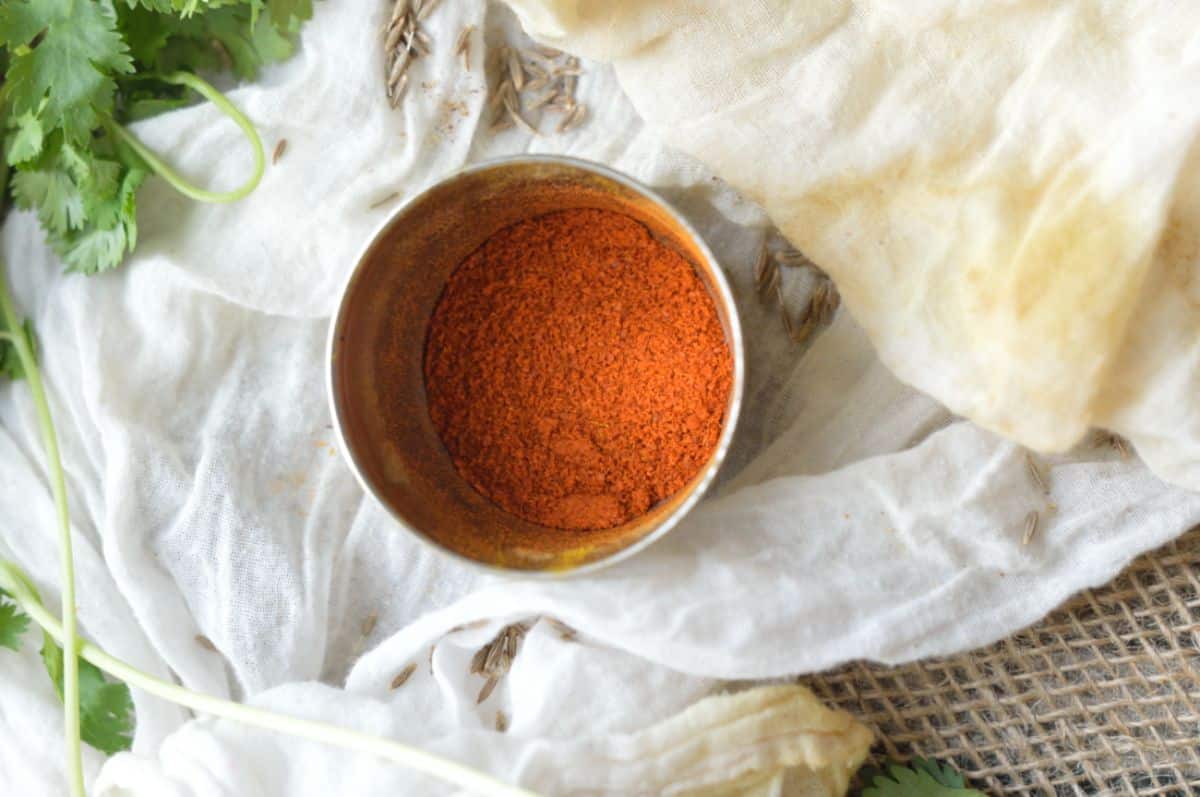
Turmeric is a key ingredient in Indian cooking, used in a variety of dishes for its vibrant color and earthy flavor. Here are some ways in which turmeric is used in Indian cooking:
- In curries and stews: Turmeric is a key ingredient in many Indian curries and stews, providing a rich and warm flavor to the dish. It is typically added along with other spices, such as cumin, coriander, and ginger, to create a complex and flavorful blend.
- In rice dishes: Turmeric is often added to rice dishes, giving the rice a beautiful yellow color and a slightly nutty flavor. This is typically done by adding turmeric to the water when cooking the rice or by frying turmeric along with other spices before adding it to the rice.
- In marinades and rubs: Turmeric is often used in marinades and rubs for meat and fish dishes. It adds a warm and earthy flavor to the dish and also helps to tenderize the meat.
- In drinks: Turmeric is used to make a popular Indian drink called golden milk, which is made by heating milk with turmeric and other spices. This drink is believed to have a number of health benefits, including anti-inflammatory and immune-boosting properties.
- In snacks and street food: Turmeric is often used in Indian snacks and street food, such as samosas and pakoras. It is typically added to the dough or batter along with other spices to give the snack a warm and earthy flavor.
Overall, turmeric is a versatile and essential ingredient in Indian cooking. It is used in a variety of dishes for its vibrant color and warm, earthy flavor and is an important part of many Indian spice blends. Whether you're making a simple curry or a complex spice blend, turmeric is a spice that no Indian kitchen should be without.

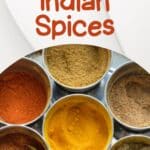
Leave a Reply